If per chance you visited address number 6709 in the Geocities neighborhood of Tokyo in 1999, you would have found the homepage of the Thomases. A family with South-African and British roots, living in Japan. On their family page they introduce themselves. Rod Thomas, the webmaster, was a minister in the Church of England in South-Africa. His wife Glenda Thomas is a primary school teacher. Rod and Glenda have four children, three of whom born in Japan. The eldest two, Amy and Andrew, were living abroad to study at Hebron school in the town of Ooty, India. Hebron is an international co-educational residential school based on Christian principles. The youngest two children, Esther and Christine, were going to a Japanese elementary school. Rod and Glenda are missionaries working with an organization called OMF. OMF is according to Wikipedia "an international and interdenominational Evangelical Christian missionary society" with the specific goal of spreading Christianity in East-Asia.

The OMF has a long history going back all the way to 1865, when it was founded by Hudson Taylor. The organization was known as the China Inland Mission (CIM) for almost a century and its original aim was to evangelize the whole of China. Soon after World War II, the communist revolution in China was in full swing and members of the CIM fled the country. The decision was then made to redeploy missionaries across the rest of East-Asia. In 1964 the organization officially changed their name to the Overseas Missionary Fellowship. Below a photo of Hudson Taylor in the center along with other CIM members.
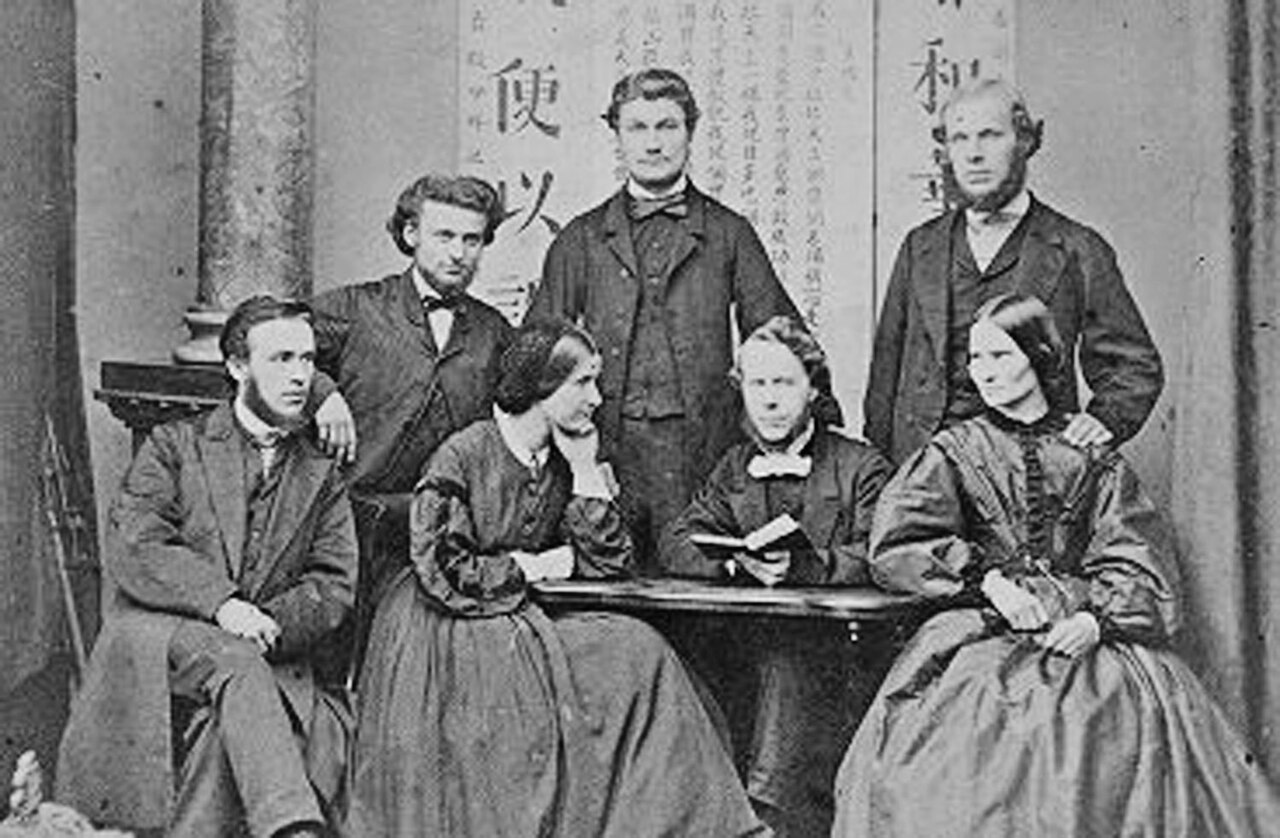
For the Thomases, this was not their first time being stationed in Japan. Glenda first came to Japan in 1982 to work as a primary school teacher in Hokkaido. Rod's first Japan deployment was in 1987. The couple previously worked in northern Japanese cities like Hachihohe, Sapporo and Sendai.
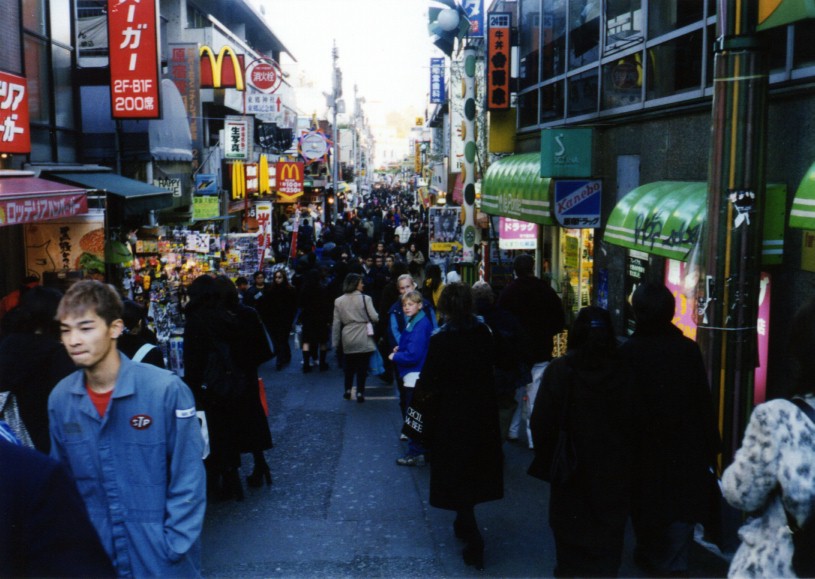
Unrelated, but this photo of Harajuku's Takeshita street in the late nineties was just to good to omit.
On the frontpage of Rod and Glenda Thomas' website you will find a link to a newsletter. Adding numbers 2 to 6 after the word 'newsletter' in the URL will show you that Rod has been writing several of these letters during the time this website was maintained. The letters give a better impression of how the Thomases lived their lives in Tokyo. The first letter was published in october 1998. This was roughly 2 months after the Thomases moved back to Japan from what I believe to have been a furlough in South-Africa. The Thomases moved into an 8 story apartment building in the sleepy Tokyo suburb of Nishi-Kasai. Rod translates his town as 'New Clean Town' which has to be the Seishincho area, close to Nishi-Kasai metro station. Nishi-Kasai is nowadays known for hosting the biggest Indian immigrant community in Japan. A hint to why the Thomases came to Tokyo is given in this newsletter. The original planters of the Nishi-Kasai church, Paul and Janet Pike had left at least temporarily and thus the church, only opened four years ago, needed a new pastor. Rod explains that the church had a very modest base of regular attendees. However, he points out that Japan is still in the aftermath of a financial crisis. Rod sees this crisis as an opportunity to lead more people towards his faith. Below is a neat map of the Nishi-Kasai station area, presumably made by Rod himself.

Reading the subsequent newsletters we learn how the adventure in Tokyo played out. In the spring of 1999 Rod seems to have settled into his work as a pastor at Nishi-Kasai church. Church attendance is still not very high and Rod is worried about the lack of people getting baptized. Rod also makes a mention of his oldest children Amy and Andrew, being shaken by the murder of Graham Staines, and Australian missionary in India, and his two sons by a group of Hindu nationalists. The story made headlines all over the world and you can read more about the incident here. Along with Graham, his two sons were killed as well. Rod's son Andrew was closely befriended with one of the boys. Coincidentally, the convict of the murder was released from jail on April 18th 2025 after 25 years.
The third newsletter shows that Rod has taken some initiatives to achieve his goal of growing the Nishi-Kasai church base. He changed the name to Nishi-Kasai International Church, because he felt it reflected the international character of their congregation. He also started organizing lots of activities that might lead to casual encounters with the word of God. The English lessons, which Glenda teaches at sunday school, are particularly popular. There is also a barbeque on the agenda. Rod also regularly officiates church weddings which were booming in the nineties in Japan and remain popular to this day. Rod claims to give the husband and wife a Bible each. A year after his move into Nishi-Kasai, Rod looks back with mixed feelings. The church is not growing as he would have hoped, but he praises the good atmosphere and sincerity among regular attendees.
Newsletter 4 was unfortunately not archived. The next installment we are able to read was published in april 2001 and the Thomases have suddenly left Tokyo for the city of Sendai! They have taken over a church in Sendai that was in dire need of a pastor. The kids Esther and Christine are now going to an international school, which is more to their liking than the Japanese public school in Nishi-Kasai. The final newsletter dates from late 2001. The Thomases spent a long summer in the United Kingdom where Rod is originally from. He describes seeing his brother, who is also a pastor, his parents and other relatives he had not seen in decades. Rod also mentions that the family is due for a furlough, where they are planning to head back to South-Africa. I could not find any more newsletters after this one. The homepage was updated less frequently after 2001 and looks to have been abandoned after 2003.
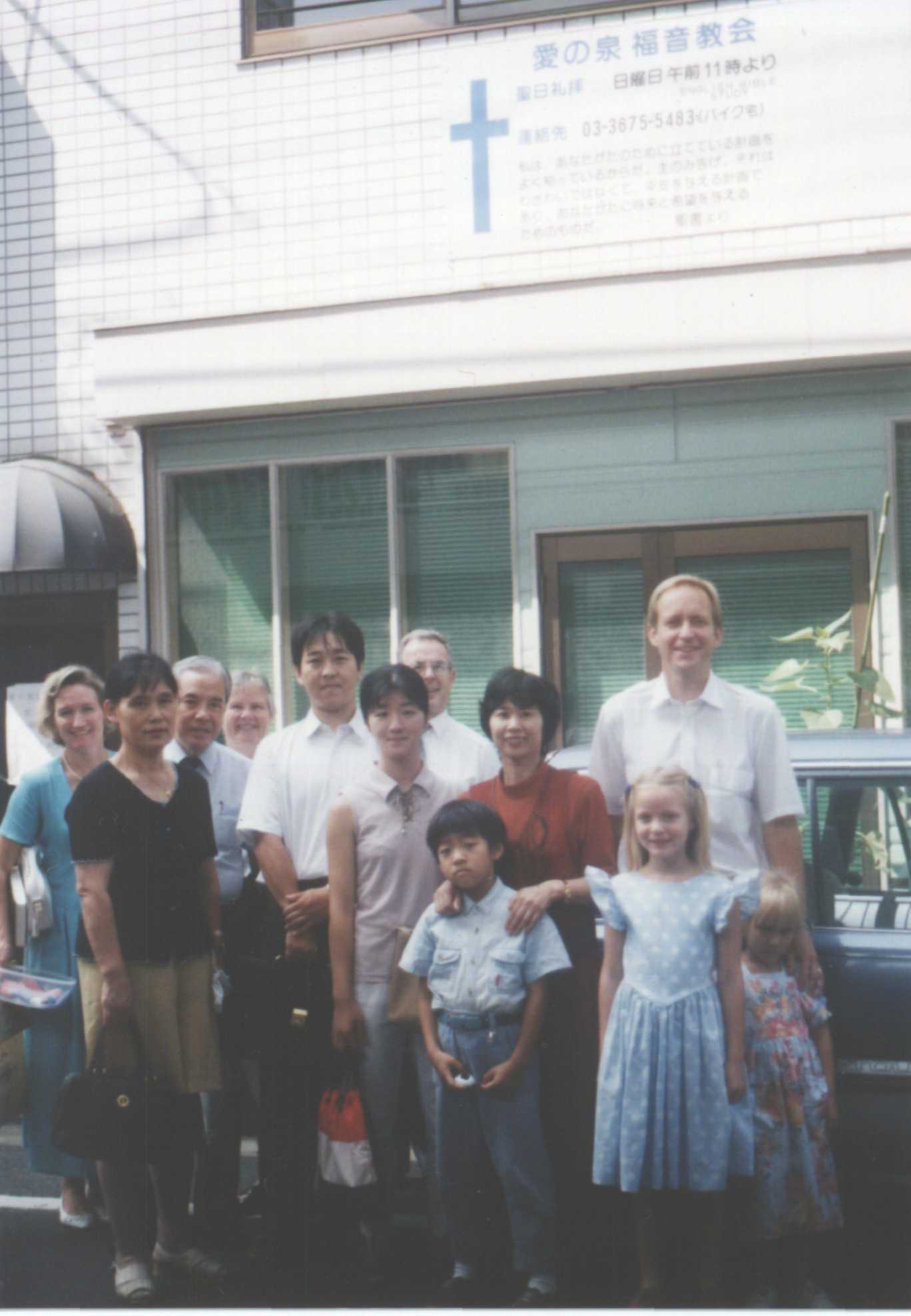
The Thomases and their congregation in front of Nishi-Kasai church.
However, the story does not end here. The Thomases were not done blogging just yet. If you Google the names of Rod and Glenda, you will find that they remained having an active online presence later in life. I found two websites which have been maintained simultaneously between 2009 and 2014 (here and here). In 2011, Rod and Glenda were once again living in Sendai, having recently returned from a furlough. Their children have grown up and the eldest two, Amy and Andrew seem to be working overseas, in Scotland and the Arabian Sea (perhaps on military dispatch?). Of the youngest two, Esther is doing missionary work in South-Africa while Christine is now studying at Hebron school. Back in Japan, the couple was about to witness something that would literally shake their lives.
On March 11th 2011 at 14:46 Japanese time, an undersea megathrust earthquake occured just off the Japanese coast. It triggered a tsunami that would devastate the Tohoku region, with tidal waves reaching over 20 meters in some areas. It struck the Japanese citizens, ever prepared for the occurence of natural disasters, by suprise. The disaster took the lives of almost 20.000 people and left hundreds of thousands without a home. As faith would have it, the Thomases returned to Japan only two weeks before the earthquake. A blog post made by Rod on March 10th, one day before the quake shows that they had returned to Sendai. They found a rental flat adjacent to their church and were due to move on March 11th. For the time being Rod and Glenda stayed in a small wooden cabin right along the Japanese coast on the Shichigahama peninsula which they had bought from OMF 10 years earlier. Rod was at the car park, loading tools into his car when he noticed dogs barking and pheasants squawking. The earthquake started as Rod was on his way back to the cabin. After four minutes the quake stopped. Loud speakers announced that a tsunami was about to hit, urging people to head to higher grounds. It took nearly 40 minutes, but then Rod and Glenda heard screaming. They went outside to find their car park, 7 meters above sea level, flooded and their green Subaru floating around. They provied shelter to their neighbors, whose ground floor had been flooded by the first wave, and waited out the second and third waves. After that Rod went outside to find Hanabuchiyama, a small town to the east of them, completely swept away. To the west he saw the city of Sendai on fire. Rod mentions on various occasions that they were in the eye of the storm and when you see the below map you will see that this was not hyberbole.
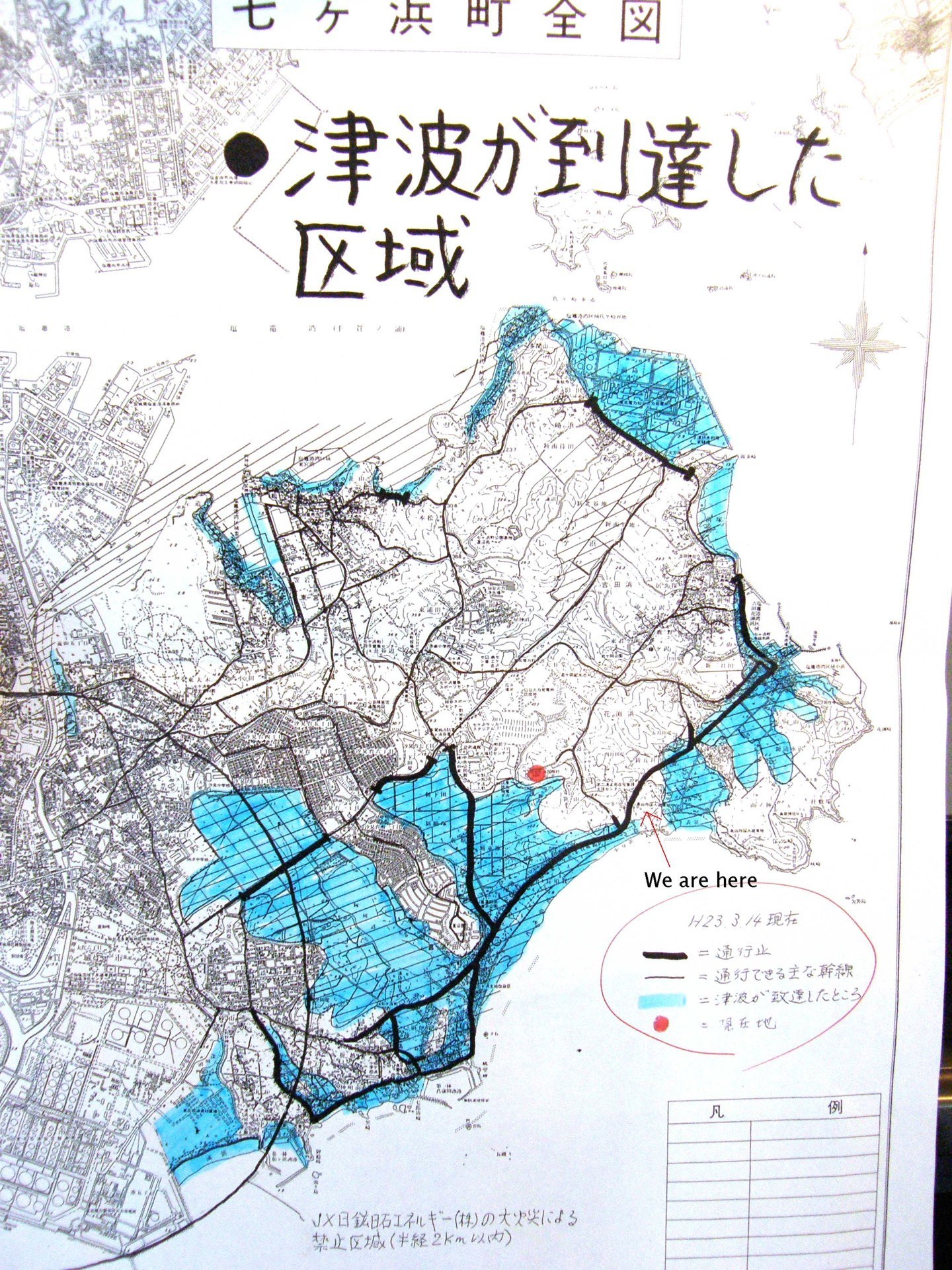
In the days that followed the Thomases try to clean up the devasation, helping neighbors to find lost items and all the while reminding the locals that this Tsunami was to be considered an act of divine intervention. On the main page of the blog Rod starts by saying that God gave Japan "a little nudge with the tip of his finger to wake it up", implying that the earthquake was a punishment by God. Rod prefers to call it a warning. Two days after the quake he went to his Sendai church, also untouched by the tsunami, to perform the sunday service. Rod unironically read Hebrews 12, "God's Unshakeable Kingdom", for 11 Church attendees that morning. The following days Rod gives lifts to people carrying bottles of water to their homes or temporary shelters. Rod however would not be Rod if he didn't use to opportunity to spread the gospel among the unsuspecting locals during the ride home. Rod mentions other missionaries leaving Japan after the Great East Japan Earthquake, but from his viewpoint, this disaster is the kind of momentum they needed.
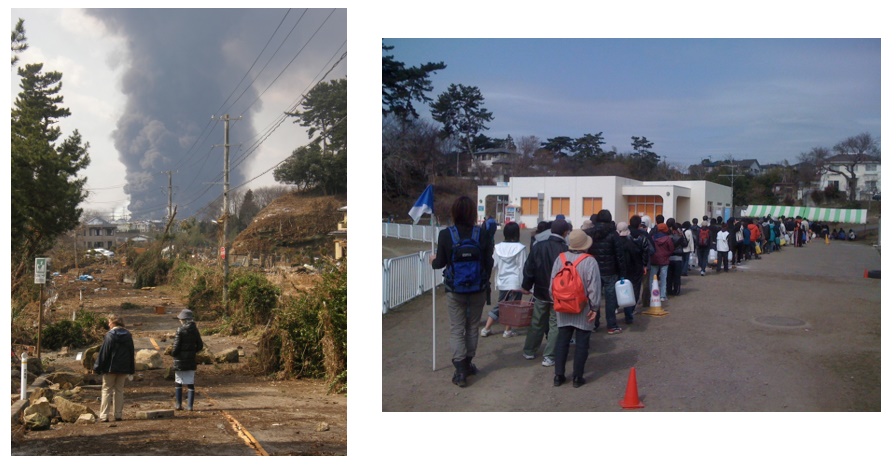
Left: The view of Sendai burning after the earthquake and tsunami. Right: People lining op for water after which Rod would provide them a ride home.
Rod maintains his Tsunami diary in the weeks following the disaster. He is a part of the Christian relief fund, which used supply trucks as well as their personal vehicles to deliver supplies where needed. Rod kept volunteering as a chauffeur, driving people collecting water back to their homes. He used any opportunity given to spread the gospel, which once resulted in him being kicked out of an evacuation center at Yoshidahama. Glenda continued teaching English classes and regularly cooked meals to provide to the victims staying at the shelter. Rod and Glenda finally moved into their Sendai apartment in april, but Rod dilligently kept up this Tsunami diary until 70 days after the earthquake. On May 29th Rod posted an update, praising the Lord because they were given permission to start a preaching point and relief centre in an area that was hit hard by the tsunami. In august Rod updates having found a small but suitable office space in Arai machi, nearby a homeless shelter for tsunami victims, however this seems to have not come through because in november 2011 Rod complains having been rejected for a lease 9 times by building owners. After that there are no more updates on the preaching point. Instead they started organizing evangelistic concerts. Rod reports about these concerts taking place throughout 2012. The last post from Rod Thomas' blogspot page was made in february 2013, almost two years after the earthquake. Rod mentions having baptised three people last month. The evangelical concerts are still being organized, including one in the town of Shichigahama where they stayed when the tsunami hit.
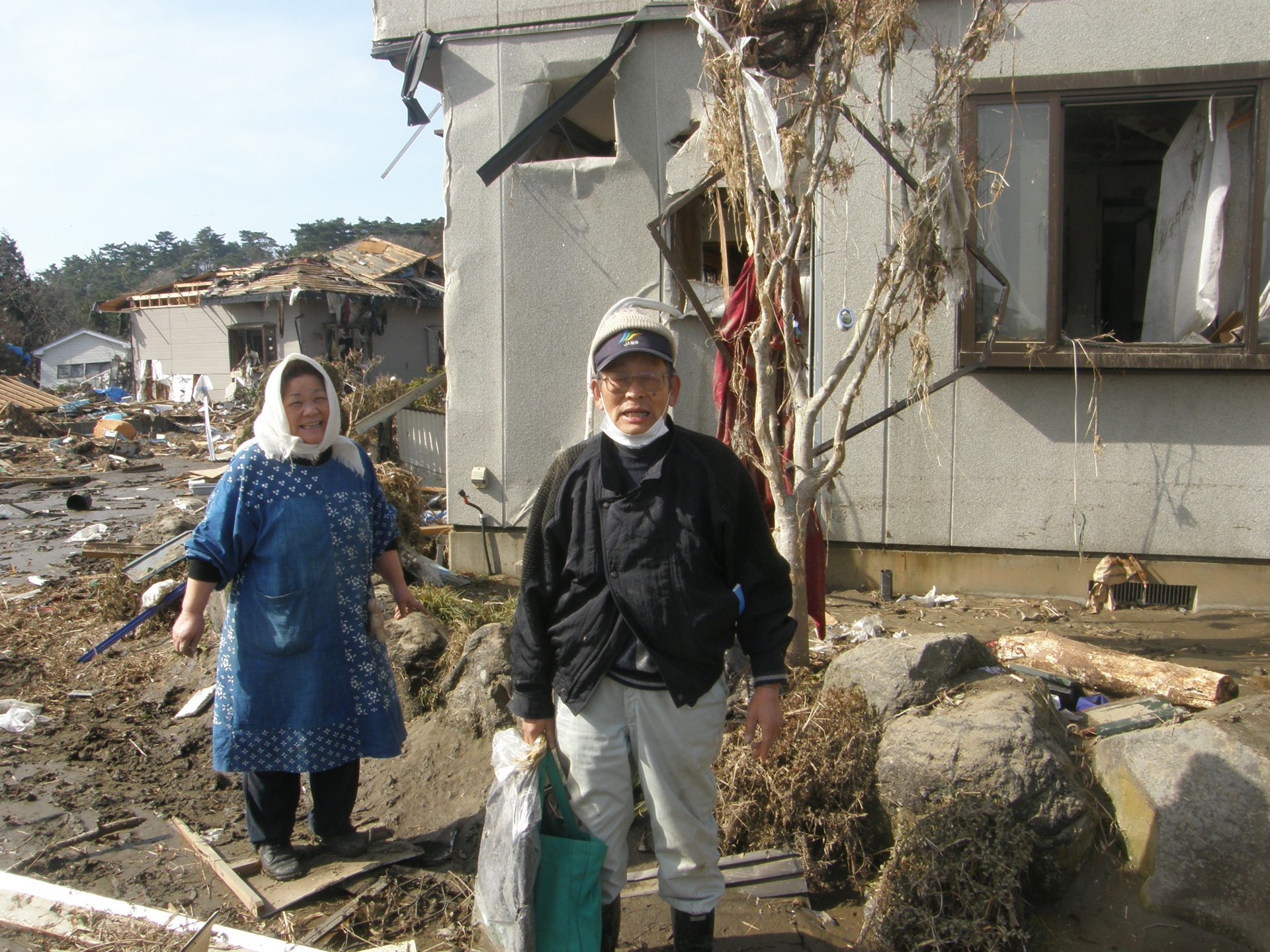
Rod mentioned he respects the Japanese for staying positive under dire circumstances.
After 2013 Rod no longer updated his blog, but we can rest assured that he and Glenda stayed in Japan for another decade. The Thomases were mentioned on the OMF's website in 2016 for having been involved in ministry to victims of the 2011 tsunami. In 2017 Rod published a book called "Gospel Boldness". Finally, I found this document from Gracefields Church in South-Africa from 2022.It contains a newsletter by Rod and Glenda, which you can read on page 39, confirming that they are still living in Sendai, working for the church.
Rod Thomas' writings provide an excellent impression of what the life of a missionary family is like. The Thomases live their life in dedication to the mission and goals of the OMF. They spent most of their lives in service of God, away from their children and their relatives in order to spread Christianity in a country that was historically antagonistic and currently uninterested towards it. Living such a life requires determination. The 2011 earthquake and tsunami was not enough momentum for the Japanese to convert to Christianity. In fact, Christianity in Japan seems to have decreased, from 1.9 million people in 2019 to just 1.26 million in 2022. I was not able to find any numbers on specific regions or cities in Japan. Although we are unable to analyse statistically the impact of Rod and Glenda in Sendai, something tells me that this does not mean much to Rod. His impact, his legacy becomes apparent through his thorough and continued writings. I do respect the Thomases for their optimistic spirit and the dedication they put into everything they do. They have most of their lives in a country and culture different from their own, but always with a smile on their face.
